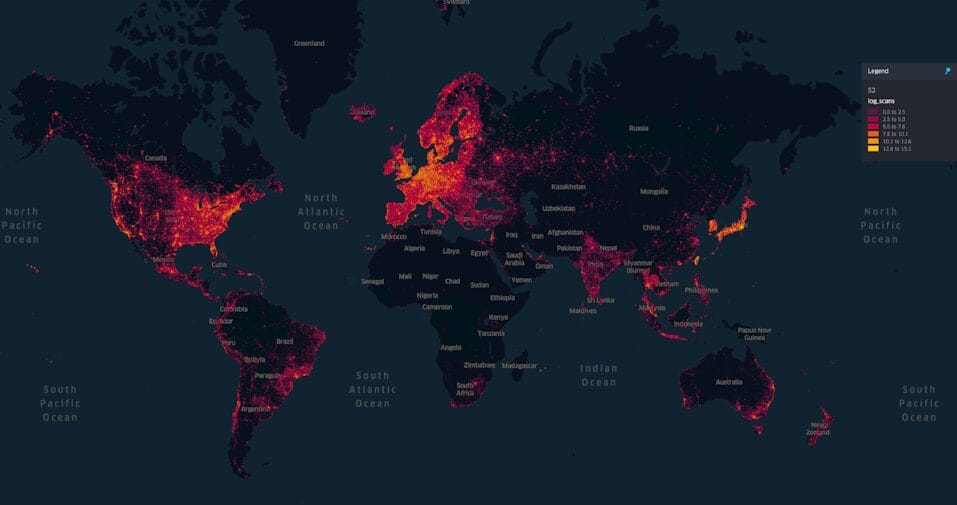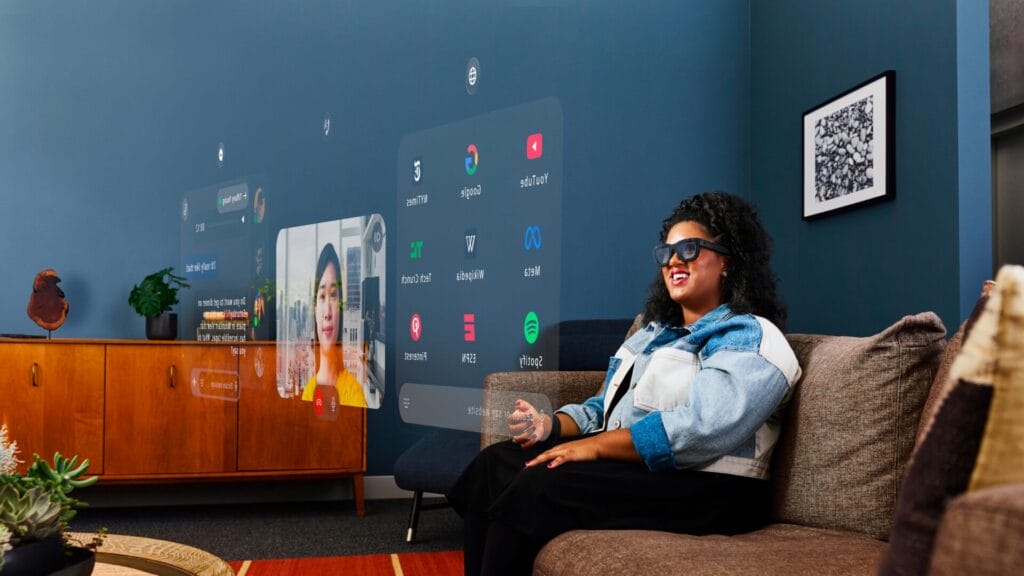In 2016, tech journalist Bryan Lunduke exposed how the game at its peak engagement was collecting a crazy amount of information on players and their environment, and how Niantic received funding and admiration from the Central Intelligence Agency (CIA). Lunduke had appeared on a number of television and radio shows around this time to discuss the massive spying program that was taking place under the auspices of an innocent game. Lunduke was ridiculed and not taken too seriously at the time, but a recent admission from Niantic more than vindicated Lunkduke’s original claims.
In his 2016 piece, Lunduke exposed how Niantic was founded, who funded it, and what information was specifically being collected by the app. He wrote:
Way back in 2001, Keyhole, Inc. was founded by John Hanke (who previously worked in a “foreign affairs” position within the U.S. government). The company was named after the old “eye-in-the-sky” military satellites. One of the key, early backers of Keyhole was a firm called In-Q-Tel.
In-Q-Tel is the venture capital firm of the CIA. Yes, the Central Intelligence Agency. Much of the funding purportedly came from the National Geospatial-Intelligence Agency (NGA). The NGA handles combat support for the U.S. Department of Defense and provides intelligence to the NSA and CIA, among others.
Keyhole’s noteworthy public product was “Earth.” Renamed to “Google Earth” after Google acquired Keyhole in 2004.
In 2010, Niantic Labs was founded (inside Google) by Keyhole’s founder, John Hanke.
Over the next few years, Niantic created two location-based apps/games. The first was Field Trip, a smartphone application where users walk around and find things. The second was Ingress, a sci-fi-themed game where players walk around and between locations in the real world.
In 2015, Niantic was spun off from Google and became its own company. Then Pokémon Go was developed and launched by Niantic. It’s a game where you walk around in the real world (between locations suggested by the service) while holding your smartphone.
Lunduke later noted in an update that the original CEO of In-Q-Tel was a man Gilman Louie. Louie received a number of awards for his work with In-Q-Tel – including CIA Agency Seal Medallions, Director’s Award by the Director of the Central Intelligence Agency, and Director of National Intelligence Medallion – which included investing in Keyhole. Louie now sits on the board of directors of Niantic.
When you install Pokémon Go on an Android phone, you grant it the following access (not including the ability to make in-app purchases):
Identity
- Find accounts on the device
Contacts
- Find accounts on the device
Location
- Precise location (GPS and network-based)
- Approximate location (network-based)
Photos/Media/Files
- Modify or delete the contents of your USB storage
- Read the contents of your USB storage
Storage
- Modify or delete the contents of your USB storage
- Read the contents of your USB storage
Camera
- Take pictures and videos
Other
- Receive data from the internet
- Control vibration
- Pair with Bluetooth devices
- Access Bluetooth settings
- Full network access
- Use accounts on the device
- View network connections
- Prevent the device from sleeping
Based on the access to your device (and your information), coupled with the design of Pokémon Go, the game should have no problem discerning and storing the following information (just for a start):
- Where you are
- Where you were
- What route you took between those locations
- When you were at each location
- How long it took you to get between them
- What you are looking at right now
- What you were looking at in the past
- What you look like
- What files you have on your device and the entire contents of those files
In March of 2017, WikiLeaks published what they dubbed “Vault 7,” which was a collection of documents that was allegedly to be a huge leak of CIA-related documents that focused heavily on hacking and electronic surveillance. The documents contained a list of codenames, descriptions, and a variety of details for Android specific escapades.
Nearly a third of those codenames were named after Pokémon characters.
Fast-forward to now, Niantic explicitly spelled-out the sheer amount of data they have been collecting and what it’s being used for.
In a blog post titled, “Building a Large Geospatial Model to Achieve Spatial Intelligence,” the authors Eric Brachmann and Victor Adrian Prisacariu bragged that the company is “pioneering the concept of a Large Geospatial Model that will use large-scale machine learning to understand a scene and connect it to millions of other scenes globally.”
The firm explained why they are collecting all this data:
As part of Niantic’s Visual Positioning System (VPS), we have trained more than 50 million neural networks, with more than 150 trillion parameters, enabling operation in over a million locations. In our vision for a Large Geospatial Model (LGM), each of these local networks would contribute to a global large model, implementing a shared understanding of geographic locations, and comprehending places yet to be fully scanned.
The LGM will enable computers not only to perceive and understand physical spaces, but also to interact with them in new ways, forming a critical component of AR glasses and fields beyond, including robotics, content creation and autonomous systems. As we move from phones to wearable technology linked to the real world, spatial intelligence will become the world’s future operating system.
Niantic says LGM “will help computers perceive, comprehend, and navigate the physical world in a way that will seem equally advanced.” They add, “A geospatial model implements a form of geospatial intelligence, where the model learns from its previous observations and is able to transfer knowledge to new locations, even if those are observed only partially.”
The company then outright says this information is being extracted from their games, Pokémon Go being one of them. Other similar games include Peridot, Monster Hunter Now, Pikmin Bloom, and Ingress Prime.
Over the past five years, Niantic has focused on building our Visual Positioning System (VPS), which uses a single image from a phone to determine its position and orientation using a 3D map built from people scanning interesting locations in our games and Scaniverse.
With VPS, users can position themselves in the world with centimeter-level accuracy. That means they can see digital content placed against the physical environment precisely and realistically. This content is persistent in that it stays in a location after you’ve left, and it’s then shareable with others.
Niantic’s VPS is built from user scans, taken from different perspectives and at various times of day, at many times during the years, and with positioning information attached, creating a highly detailed understanding of the world. This data is unique because it is taken from a pedestrian perspective and includes places inaccessible to cars.

Niantic brags they “have 10 million scanned locations around the world, and over 1 million of those are activated and available for use with our VPS service,” and they “receive about 1 million fresh scans each week, each containing hundreds of discrete images.”
“As part of the VPS, we build classical 3D vision maps using structure from motion techniques – but also a new type of neural map for each place. These neural models, based on our research papers ACE (2023) and ACE Zero (2024) do not represent locations using classical 3D data structures anymore, but encode them implicitly in the learnable parameters of a neural network. These networks can swiftly compress thousands of mapping images into a lean, neural representation. Given a new query image, they offer precise positioning for that location with centimeter-level accuracy,” the company added.
Lunduke said in a recent video report that this has granted the CIA the ability to perfectly map inside your house, where everything is, what you are doing, the time it was done, etc. He joked that this would make Dr. Evil blush.
AUTHOR COMMENTARY
Isaiah 3:5 And the people shall be oppressed, every one by another, and every one by his neighbour: the child shall behave himself proudly against the ancient, and the base against the honourable.
Now we know why Pokémon Go was promoted so heavily in the media back in its heyday, because it was the perfect digital opiate that rewarded people with instant gratification while consciously collecting all that data to perfectly geolocate and map everything, down to the centimeter, they tell us.
And this is just one company doing this, not to mention all the data that is already being collected by the phone manufacturer and service carriers, which is then sold and provided to governments and third-party platforms. After all, we have the PATRIOT Act and FISA Act here in the U.S. that tracks and traces every keystroke we make.
Niantic revealed that this data is being used to help pave the way for this augmented reality world. In September, Meta released their Orion AR smart glasses, which basically puts a smartphone on your face, with interface and other interactions merging with the material world.

Elon Musk’s Starlink also does not get talked about a lot. “Starlink is the world’s first and largest satellite constellation using a low Earth orbit to deliver broadband internet capable of supporting streaming, online gaming, video calls and more. Leveraging advanced satellites and user hardware coupled with our deep experience with both spacecraft and on-orbit operations, Starlink delivers high-speed, low-latency internet to users all over the world.”
Bearing all of this in mind, it further explains how the future mark of the beast system is going to operate. As it appears, most everything will need to be mapped and operated in real time by AI algorithms, all-connected and all-knowing (within its limitations of course, as God Almighty can only know and see everything); and makes further sense in the context of tokenizing all assets and putting that on a blockchain.
- Trivergence: The Trifecta Of Totalitarian Control And AI Enslavement
- Nokia CEO Says 6G Will Render Smartphones Obsolete By 2030 And Will Be Integrated Into Your Body Instead
- Huawei Introduces 5.5G Technology: Augmented Reality, Automation, And AI Advanced
- Elon Musk Says His Neuralink Brain Implant Will Replace Phones
- IoT Devices Will Be The Catalyst For The 4th Industrial Revolution
- Nvidia Executive Says ‘AI Will Acquire A Human Form’ And Will Be Integrated Into Everything. ‘The Machine Is To The Body What AI Is To The Brain’
- Klaus Schwab Declares The ‘New Dawn’ Of Transitioning ‘Humankind Into A New Era,’ By Merging Man With Machine
- Amazon Customer’s Smart Home Shut Down After Making Alleged Racist Remark, Foreshadowing A Sinister Reality
Revelation 13:16 And he causeth all, both small and great, rich and poor, free and bond, to receive a mark in their right hand, or in their foreheads: [17] And that no man might buy or sell, save he that had the mark, or the name of the beast, or the number of his name. [18] Here is wisdom. Let him that hath understanding count the number of the beast: for it is the number of a man; and his number is Six hundred threescore and six.
[7] Who goeth a warfare any time at his own charges? who planteth a vineyard, and eateth not of the fruit thereof? or who feedeth a flock, and eateth not of the milk of the flock? [8] Say I these things as a man? or saith not the law the same also? [9] For it is written in the law of Moses, Thou shalt not muzzle the mouth of the ox that treadeth out the corn. Doth God take care for oxen? [10] Or saith he it altogether for our sakes? For our sakes, no doubt, this is written: that he that ploweth should plow in hope; and that he that thresheth in hope should be partaker of his hope. (1 Corinthians 9:7-10).
The WinePress needs your support! If God has laid it on your heart to want to contribute, please prayerfully consider donating to this ministry. If you cannot gift a monetary donation, then please donate your fervent prayers to keep this ministry going! Thank you and may God bless you.








You thought you heard it all….
Pokemon at its core is Satanic. Lighthouse Trails Research has a booklet on Pokemon. I will list the link since you can read it free online.
https://www.lighthousetrailsresearch.com/blog/new-booklet-a-christian-parents-guide-to-pokemon/
18 They hunt our steps, that we cannot go in our streets: our end is near, our days are fulfilled; for our end is come.
19 Our persecutors are swifter than the eagles of the heaven: they pursued us upon the mountains, they laid wait for us in the wilderness.
Lamentations 4:18-19
I was never a fan of Pokemon even when their popularity was astronomical back in the late 90s, I saw a few episodes but I could not get into them if I tried.
Supposedly, Pokemon is occult if I’m not mistaken. Now we see that all along they were created as a distraction and a bondage – like video games, and now they’re a spy tool for the CIA (Catholics In Action)!
And yes, this is all leading up to the mark of the beast and the Antichrist world surveillance system.
Pokemon is Satanic as well. There is a booklet that is free to read over at Lighthouse Trails Research on Pokemon. It figures the Illuminati use something like Pokemon to also set up the beast system.
Thank you for some other wonderful article. Where else may anybody get that kind of info in such a perfect way of writing? I have a presentation subsequent week, and I am on the search for such info.
This web site is my breathing in, real great design and style and perfect articles.
Hey very cool site!! Man .. Beautiful .. Amazing .. I will bookmark your web site and take the feeds also…I am happy to find a lot of useful info here in the post, we need work out more strategies in this regard, thanks for sharing. . . . . .